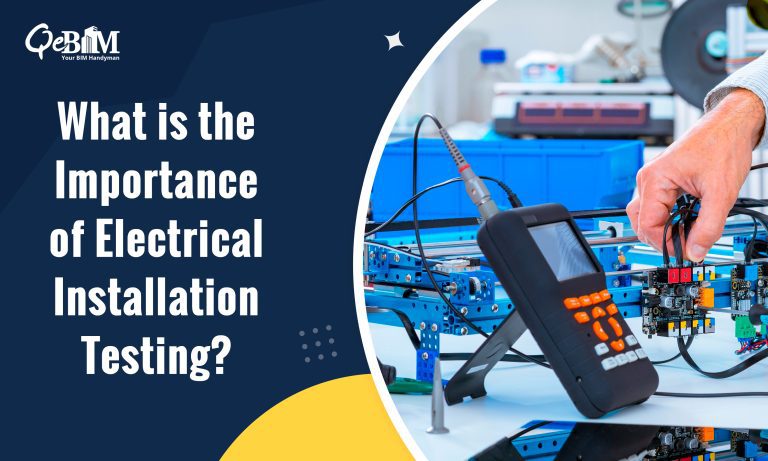What is the Importance of Electrical Installation Testing?

Introduction
Electrical installation testing is crucial to guarantee the safety, dependability, and adherence to regulations of electrical systems in diverse environments. From residential buildings to commercial complexes to industrial settings, proper testing procedures play a vital role in preventing accidents, minimizing downtime, and meeting regulatory standards.
The below article will help you understand the significance of electrical installation testing, exploring its various aspects and the reasons behind its necessity.
The Necessity of Electrical Installation Testing
1) Ensuring Safety and Preventing Accidents
The primary purpose of electrical installation testing is to identify potential hazards and ensure the safety of individuals and property. Flawed wiring, circuits overloaded beyond capacity, or impaired components can lead to electrical fires, shocks, or even fatalities. Regular testing and the accurate Electrical Shop Drawing Services helps detect these issues before they escalate, allowing for timely interventions and preventive measures.
2) Compliance with Regulations and Standards
Adherence to electrical safety regulations and standards is a legal obligation in numerous jurisdictions. Regulatory bodies establish guidelines to guarantee that electrical installations meet specific safety benchmarks. Electrical installation testing is essential for confirming compliance with these regulations, ensuring that installations are designed using precise Electrical Drafting Services and maintained in accordance with industry standards.
3) Reliability and Performance Optimization
Electrical installation testing goes beyond ensuring safety; it also enhances the reliability and performance of the system. By identifying and rectifying potential issues, testing helps prevent unexpected breakdowns and ensures that the electrical infrastructure functions optimally. This is mainly important in industrial infras where downtime can result in substantial financial losses.
4) Verification of Design and Construction Quality
Before an electrical installation is commissioned, it undergoes thorough design and construction phases. However, errors or oversights can occur during these processes. Electrical installation testing serves as a means to verify that the design has been implemented correctly and that the construction meets the specified standards. This verification step is vital for avoiding costly rework and ensuring the longevity of the electrical system.
5) Identification of Overloads and Faults
Electrical systems are subject to various stresses and conditions that can lead to overloads or faults. These issues can jeopardize the effectiveness and safety of the installation. Through testing, professionals can identify and rectify problems such as overloading, short circuits, and insulation breakdowns. This proactive approach minimizes the risk of unexpected failures and extends the lifespan of the electrical infrastructure.
6) Documentation and Record-Keeping
Documentation is a crucial aspect of electrical installation testing. Thorough documentation of testing procedures, outcomes, and any corrective measures taken offers a comprehensive overview of the system’s status. This documentation is valuable for future maintenance, audits, and compliance checks. It also aids in troubleshooting by offering insights into the historical performance of the electrical installation.
7) Cost Efficient in the Long Run
While some may perceive electrical installation testing as an additional expense, it proves to be a cost-effective measure in the long run. Identifying and addressing issues early on prevents more extensive damage that would require extensive repairs or replacements. Regular testing contributes to the longevity of the electrical system, minimizing the chances of unforeseen malfunctions and associated costs.
8) Routine Maintenance Planning
Electrical installation testing is an integral part of routine maintenance planning. By scheduling regular tests, maintenance teams can assess the health of the electrical system and plan interventions accordingly. Adopting this proactive strategy minimizes operational downtime, enhances system reliability, and lowers long-term maintenance expenses.
Conclusion
Electrical installation testing is a critical process that goes beyond mere compliance; it is a proactive strategy to ensure safety, reliability, energy efficiency, and optimal performance of electrical systems. From preventing accidents to complying with regulations and optimizing performance, the benefits of thorough testing are manifold. Investing in electrical installation testing is not just a legal obligation but a practical and economical step towards creating a secure and efficient electrical infrastructure. Prioritizing testing is fundamental and can lead to a safer and more reliable electrical future.